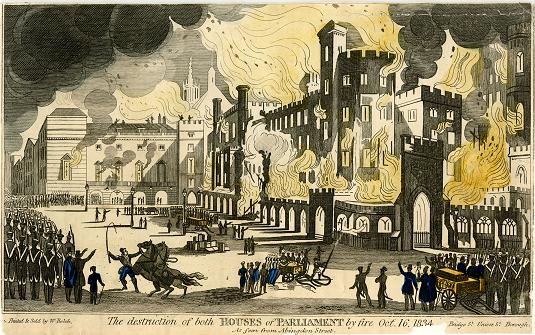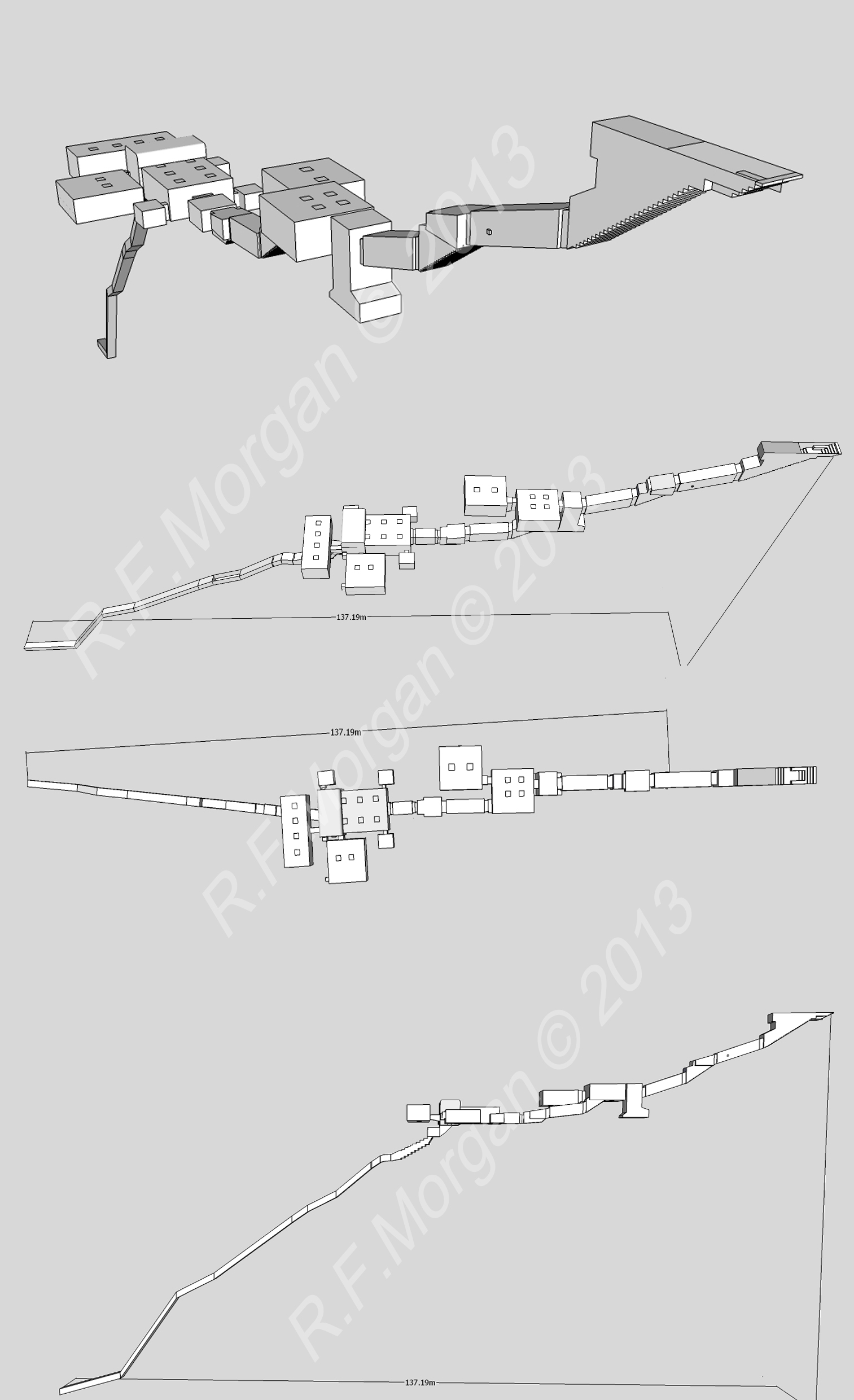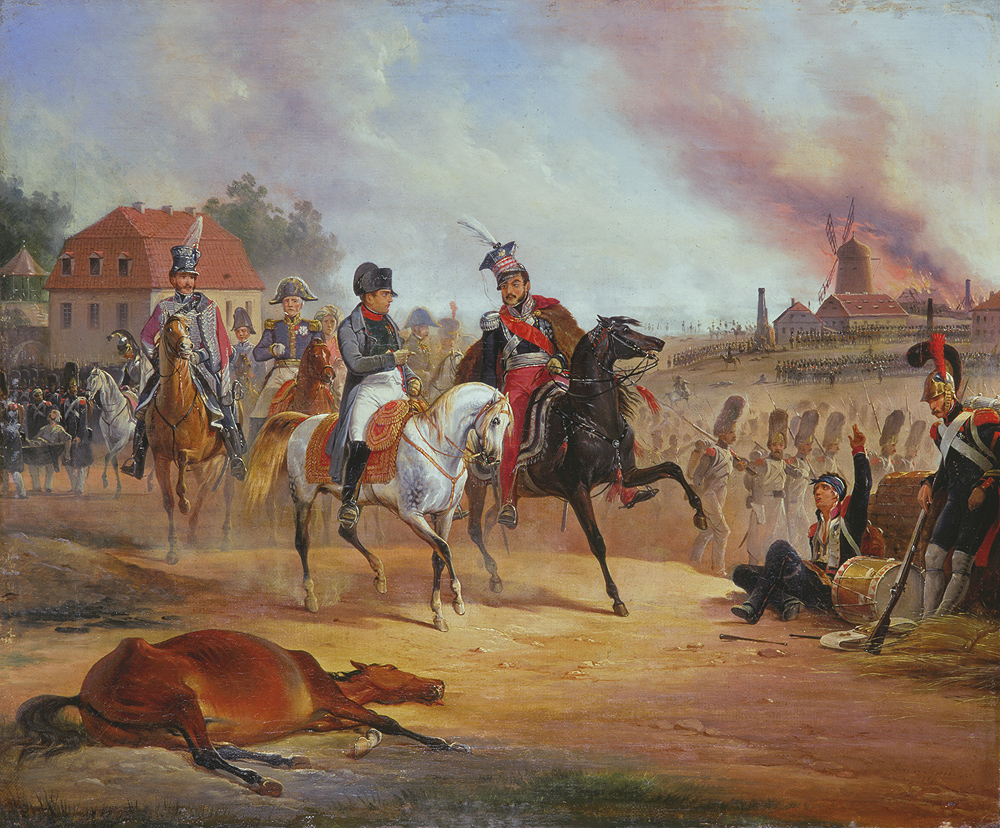|
October 16
Events Pre-1600 * 456 – Ricimer defeats Avitus at Piacenza and becomes master of the Western Roman Empire. * 690 – Empress Wu Zetian ascends to the throne of the Tang dynasty and proclaims herself ruler of the Chinese Empire. * 912 – Abd ar-Rahman III becomes the eighth Emir of Córdoba. * 955 – King Otto I defeats a Slavic revolt in what is now Mecklenburg-Vorpommern. *1311 – The Council of Vienne convenes for the first time. * 1384 – Jadwiga is crowned King of Poland, although she is a woman. * 1590 – Prince Gesualdo of Venosa murders his wife and her lover. 1601–1900 * 1736 – Mathematician William Whiston's predicted comet fails to strike the Earth. *1780 – American Revolutionary War: The British-led Royalton raid is the last Native American raid on New England. * 1780 – The Great Hurricane of 1780 finishes after its sixth day, killing between 20,000 and 24,000 residents of the Lesser Antilles. *1793 ... [...More Info...] [...Related Items...] OR: [Wikipedia] [Google] [Baidu] [Amazon] |
Ricimer
Ricimer ( , ; – 19 August 472) was a Romanized Germanic general, who ruled the remaining territory of the Western Roman Empire from 456 after defeating Avitus, until his death in 472, with a brief interlude in which he contested power with Procopius Anthemius. Deriving his power from his position as ''magister militum'' of the Western Empire, Ricimer exercised political control through a series of puppet emperors. Ricimer's death led to unrest across Italy and the establishment of a Germanic kingdom on the Italian Peninsula. Lineage The date of Ricimer's birth is unknown. Some scholars have dated it as late as the early 430s, which would have made him unusually young when he rose to power. A birthdate of around 418 is more likely. The names of his parents are also unknown. In his panegyric to Anthemius, given in 468, the poet Sidonius Apollinaris claimed that Ricimer was Suevic on his father's side and Visigothic on his mother's, specifying that his maternal grandfathe ... [...More Info...] [...Related Items...] OR: [Wikipedia] [Google] [Baidu] [Amazon] |
Marie Antoinette
Marie Antoinette (; ; Maria Antonia Josefa Johanna; 2 November 1755 – 16 October 1793) was the last List of French royal consorts, queen of France before the French Revolution and the establishment of the French First Republic. She was the wife of Louis XVI. Born Archduchess Maria Antonia of Austria, she was the penultimate child and youngest daughter of Empress Maria Theresa and Francis I, Holy Roman Emperor, Emperor Francis I. She married Louis Auguste, Dauphin of France, in May 1770 at age 14, becoming the Dauphine of France. On 10 May 1774, her husband ascended the throne as Louis XVI, and she became queen. As queen, Marie Antoinette became increasingly a target of criticism by opponents of the domestic and foreign policies of Louis XVI and those opposed to the monarchy in general. The French accused her of being profligate, promiscuous, having illegitimate children, and harboring sympathies for France's perceived enemies, including her native Habsburg monarchy, Austria ... [...More Info...] [...Related Items...] OR: [Wikipedia] [Google] [Baidu] [Amazon] |
1836
Events January–March * January 1 — Hill Street Academy is named Colombo Academy and acquired by the Government, establishing the first public school in Sri Lanka. * January 1 – Queen Maria II of Portugal marries Prince Ferdinand Augustus Francis Anthony of Saxe-Coburg-Gotha. * January 5 – Former U.S. Representative Davy Crockett of Tennessee arrives in Texas to join the Texan fight for independence from Mexico. * January 12 ** , with Charles Darwin on board, reaches Sydney. ** Will County, Illinois, is formed. * February 8 – London and Greenwich Railway opens its first section, the first railway in London, England. * February 23 – Texas Revolution: The Battle of the Alamo begins, with an American settler army surrounded by the Mexican Army, under Santa Anna. * February 25 – Samuel Colt receives a United States patent for the Colt revolver, the first revolving barrel multishot firearm. * March 1 – Texas Revolution – Convention of 1836: Delegates fro ... [...More Info...] [...Related Items...] OR: [Wikipedia] [Google] [Baidu] [Amazon] |
Burning Of Parliament
The Palace of Westminster, the medieval royal palace used as the home of the Parliament of the United Kingdom, British parliament, was largely destroyed by fire on 16 October 1834. The blaze was caused by the burning of small wooden tally sticks which had been used as part of the accounting procedures of the Exchequer until 1826. The sticks were disposed of carelessly in the two furnaces under the House of Lords, which caused a chimney fire in the two flues that ran under the floor of the Lords' chamber and up through the walls. The resulting fire spread rapidly throughout the complex and developed into the largest conflagration in London between the Great Fire of London, Great Fire of 1666 and the Blitz of the Second World War; the event attracted large crowds which included several artists who provided pictorial records of the event. The fire lasted for most of the night and destroyed a large part of the palace, including the converted St Stephen's Chapel—the meeting place ... [...More Info...] [...Related Items...] OR: [Wikipedia] [Google] [Baidu] [Amazon] |
1834
Events January–March * January 1 – Zollverein (Germany): Customs charges are abolished at borders within its member states. * January 3 – The government of Mexico imprisons Stephen F. Austin in Mexico City. * January – The Wilmington and Raleigh Railroad is chartered in Wilmington, North Carolina. * February 3 – Wake Forest University is founded as the Wake Forest Manual Labor Institute in Wake Forest, North Carolina. * February 12 – Freed American slaves from Maryland form a settlement in Cape Palmas, it is named the Republic of Maryland. * February 13 – Robert Owen organizes the Grand National Consolidated Trades Union in the United Kingdom. * March 6 – York, Upper Canada, is incorporated as Toronto. * March 11 – The United States Survey of the Coast is transferred to the Department of the Navy. * March 14 – John Herschel discovers the open cluster of stars now known as NGC 3603, observing from the Cape of Good Hope. * March 28 – Andrew J ... [...More Info...] [...Related Items...] OR: [Wikipedia] [Google] [Baidu] [Amazon] |
Manuel Piar
Manuel Carlos María Francisco Piar Gómez (April 28, 1774 – October 16, 1817) was General-in-Chief of the army fighting Spain during the Venezuelan War of Independence. Heritage and early life The son of Fernando Alonso Piar y Lottyn, a Spanish merchant seaman of Canarian origin . LA EMIGRACION Y SU TRASCENDENCIA EN LA HISTORIA DEL PUEBLO CANARIO (VIII) (THE Emigration AND ITS SIGNIFICANCE IN THE HISTORY of CANARY (VIII)) (Accessed on October 5, 2010 at 17:55 (VIII))(In Spanish) and María Isabel Gómez, a Dutch woman born to an Afro-Venezuelan father and a Dutch mother in Willemstad, Curaçao, Piar grew up as a humble quadroon subject to the discriminating limits imposed by the social norms of colonial times. He arrived in Venezuela with his mother when he was ten years old and set up residence in La Guaira. Without formal schooling he acquired by himself a good level of general knowledge and taught himself several languages. At the age of 23, he decided to join the independ ... [...More Info...] [...Related Items...] OR: [Wikipedia] [Google] [Baidu] [Amazon] |
Valley Of The Kings
The Valley of the Kings, also known as the Valley of the Gates of the Kings, is an area in Egypt where, for a period of nearly 500 years from the Eighteenth Dynasty to the Twentieth Dynasty, rock-cut tombs were excavated for pharaohs and powerful nobles under the New Kingdom of ancient Egypt. It is a wadi sitting on the west bank of the Nile, opposite Thebes (modern-day Luxor) and within the heart of the Theban Necropolis.Siliotti (1997), p. 13 There are two main sections: the East Valley, where the majority of the royal tombs are situated; and the West Valley, otherwise known as the Valley of the Monkeys. With the 2005 discovery of a new chamber and the 2008 discovery of two further tomb entrances, the Valley of the Kings is known to contain 65 tombs and chambers, ranging in size from the simple pit that is KV54 to the complex tomb that is KV5, which alone has over 120 chambers for the sons of Ramesses II. It was the principal burial place for the New Kingdom's major roya ... [...More Info...] [...Related Items...] OR: [Wikipedia] [Google] [Baidu] [Amazon] |
Tomb Of Seti I
The tomb of Seti I, also known by its List of burials in the Valley of the Kings, tomb number, KV17, is the Ancient Egyptian funerary practices, tomb of Pharaoh Seti I of the Nineteenth Dynasty of Egypt, Nineteenth Dynasty. Located in Egypt's Valley of the Kings, It is also known by the names "Belzoni's tomb", "the Tomb of Apis", and "the Tomb of Psammis, son of Nechois". It is one of the most decorated tombs in the valley, and is one of the largest and deepest tombs in the Valley of the Kings. It was uncovered by Italian archaeologist and explorer Giovanni Belzoni on 16 October 1817. Design Previously considered the longest tomb in the valley until the discovery of the KV5, Tomb of the Sons of Ramesses II, at 137.19 meters (450.10 feet), it contains well preserved reliefs in all but two of its seventeen chambers and side rooms. The design of the tomb follows a "Joggle (architecture), joggled axis" style of architecture; the tomb entry's descending line is interrupted by a "wig ... [...More Info...] [...Related Items...] OR: [Wikipedia] [Google] [Baidu] [Amazon] |
Giovanni Belzoni
Giovanni Battista Belzoni (; 5 November 1778 – 3 December 1823), sometimes known as The Great Belzoni, was a prolific Italian explorer and pioneer archaeologist of Egyptian antiquities. He is known for his removal to England of the seven-tonne bust of Ramesses II, the clearing of sand from the entrance of the great temple at Abu Simbel, the discovery and documentation of the tomb of Seti I (still sometimes known as "Belzoni's Tomb"), including the sarcophagus of Seti I, and the first to penetrate into the Pyramid of Khafre, the second pyramid of the Giza complex. Early life Belzoni was born in Padua. His father was a barber who sired fourteen children. His family was from Rome and when Belzoni was 16 he went to work there, saying that he studied hydraulics. He intended on taking monastic vows, but in 1798 the occupation of the city by French troops drove him from Rome and changed his proposed career. In 1800 he moved to the Batavian Republic (now Netherlands) where he ear ... [...More Info...] [...Related Items...] OR: [Wikipedia] [Google] [Baidu] [Amazon] |
1817
Events January–March * January 1 – Sailing through the Sandwich Islands, Otto von Kotzebue discovers New Year Island. * January 19 – An army of 5,423 soldiers, led by General José de San Martín, starts crossing the Andes from Argentina, to liberate Chile and then Peru. * January 20 – Ram Mohan Roy and David Hare found Hindu College, Calcutta, offering instructions in English on Western subjects, including other European languages. * February 12 – Battle of Chacabuco: Argentine and Chilean soldiers of the United Provinces of the Río de la Plata defeat the Spanish royalist troops in what is now Chile, marking the turning point in the war against European rule of South America. * March 3 ** On his last day in office, U.S. President James Madison vetoes John C. Calhoun's Bonus Bill as unconstitutional after it has passed both houses of the U.S. Congress. ** The U.S. Congress passes a law to split the Mississippi Territory, afte ... [...More Info...] [...Related Items...] OR: [Wikipedia] [Google] [Baidu] [Amazon] |
Battle Of Leipzig
The Battle of Leipzig, also known as the Battle of the Nations, was fought from 16 to 19 October 1813 at Leipzig, Saxony. The Coalition armies of Austria, Prussia, Sweden, and Russia, led by Tsar Alexander I, Karl von Schwarzenberg, and Gebhard von Blücher decisively defeated the ''Grande Armée'' of French Emperor Napoleon Bonaparte. Napoleon's army also contained Polish and Italian troops, as well as Germans from the Confederation of the Rhine (mainly Saxony and Württemberg). The battle was the culmination of the German campaign of 1813 and involved about 560,000 soldiers, 2,200 artillery pieces, the expenditure of 400,000 rounds of artillery ammunition, and 133,000 casualties, making it the largest battle of the Napoleonic Wars, and the largest battle in Europe prior to World War I. Decisively defeated, Napoleon was compelled to return to France while the Sixth Coalition kept up its momentum, dissolving the Confederation of the Rhine and invading France early the ... [...More Info...] [...Related Items...] OR: [Wikipedia] [Google] [Baidu] [Amazon] |
1813
Events January–March * January 5 – The Danish state bankruptcy of 1813 occurs. * January 18– 23 – War of 1812: The Battle of Frenchtown is fought in modern-day Monroe, Michigan between the United States and a British and Native American alliance. * January 24 – The Philharmonic Society (later the Royal Philharmonic Society) is founded in London. * January 28 – Jane Austen's ''Pride and Prejudice'' is published anonymously in London. * January 31 – The Assembly of the Year XIII is inaugurated in Buenos Aires. * February – War of 1812 in North America: General William Henry Harrison sends out an expedition to burn the British vessels at Fort Malden by going across Lake Erie via the Bass Islands in sleighs, but the ice is not hard enough, and the expedition returns. * February 3 – Argentine War of Independence: José de San Martín and his Regiment of Mounted Grenadiers gain a largely symbolic victory against a Spanish ... [...More Info...] [...Related Items...] OR: [Wikipedia] [Google] [Baidu] [Amazon] |






